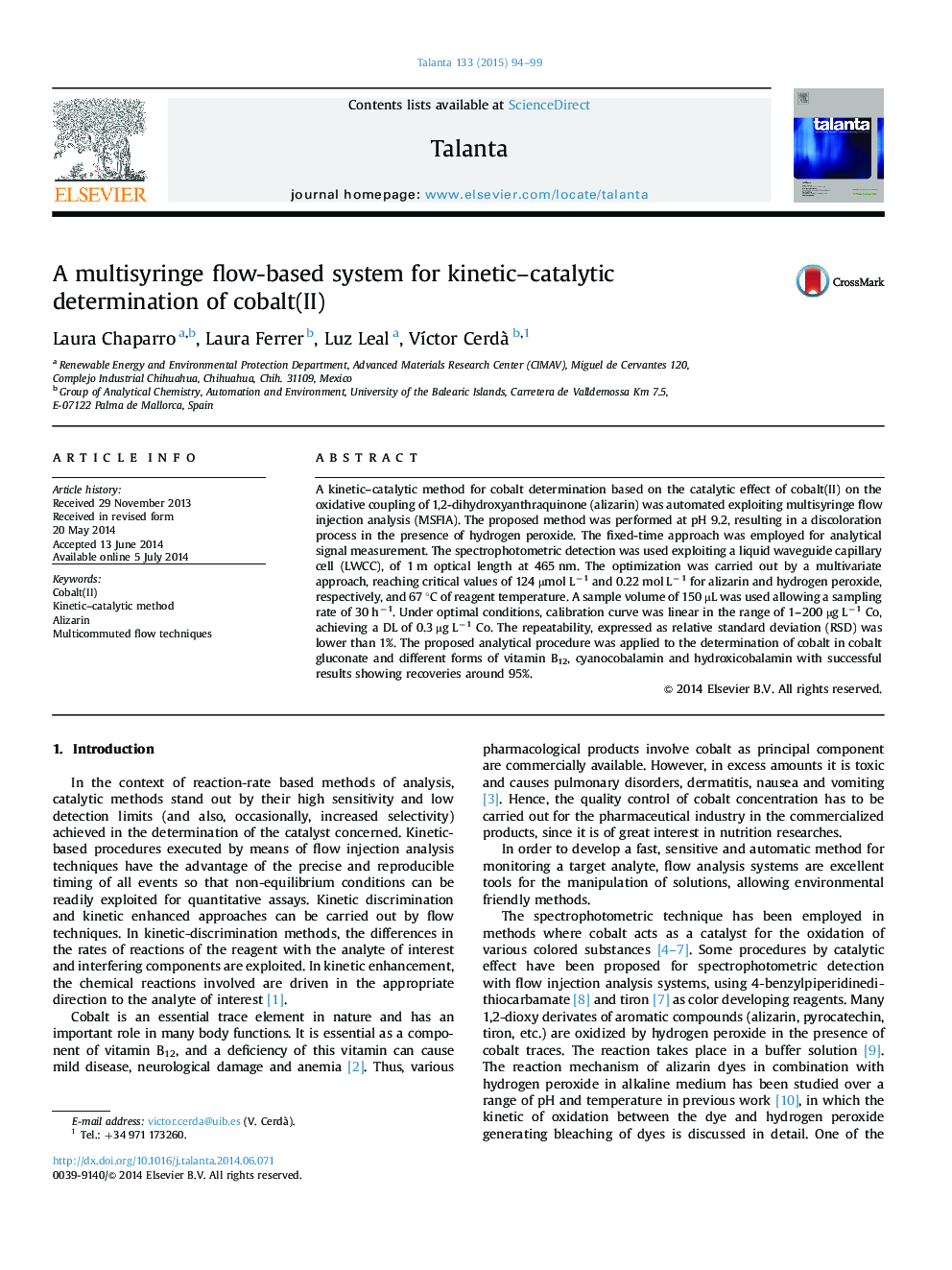| Article ID | Journal | Published Year | Pages | File Type |
|---|---|---|---|---|
| 1243430 | Talanta | 2015 | 6 Pages |
•High sensitivity for cobalt determination without preconcentration.•Provides a higher sample throughput than those presented in previous FIA techniques.•Coupling MSFIA with liquid waveguide capillary cells allows to reach low DL.•Provides high automation grade, which is very attractive for routine analysis.•It is able to analyze cobalt in samples of pharmaceutical products.
A kinetic–catalytic method for cobalt determination based on the catalytic effect of cobalt(II) on the oxidative coupling of 1,2-dihydroxyanthraquinone (alizarin) was automated exploiting multisyringe flow injection analysis (MSFIA). The proposed method was performed at pH 9.2, resulting in a discoloration process in the presence of hydrogen peroxide. The fixed-time approach was employed for analytical signal measurement. The spectrophotometric detection was used exploiting a liquid waveguide capillary cell (LWCC), of 1 m optical length at 465 nm. The optimization was carried out by a multivariate approach, reaching critical values of 124 µmol L−1 and 0.22 mol L−1 for alizarin and hydrogen peroxide, respectively, and 67 °C of reagent temperature. A sample volume of 150 µL was used allowing a sampling rate of 30 h−1. Under optimal conditions, calibration curve was linear in the range of 1–200 µg L−1 Co, achieving a DL of 0.3 µg L−1 Co. The repeatability, expressed as relative standard deviation (RSD) was lower than 1%. The proposed analytical procedure was applied to the determination of cobalt in cobalt gluconate and different forms of vitamin B12, cyanocobalamin and hydroxicobalamin with successful results showing recoveries around 95%.
Graphical abstractFigure optionsDownload full-size imageDownload as PowerPoint slide
